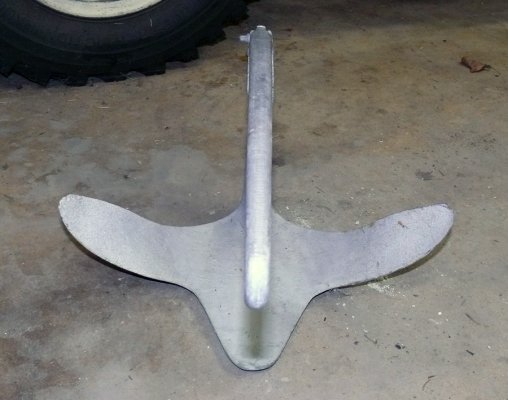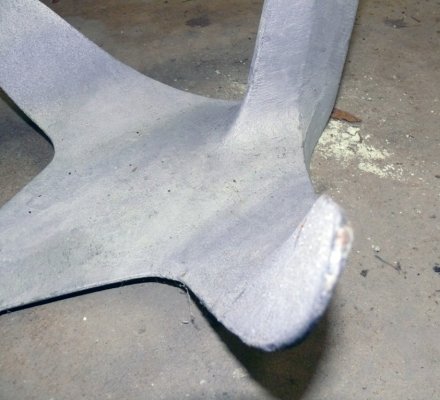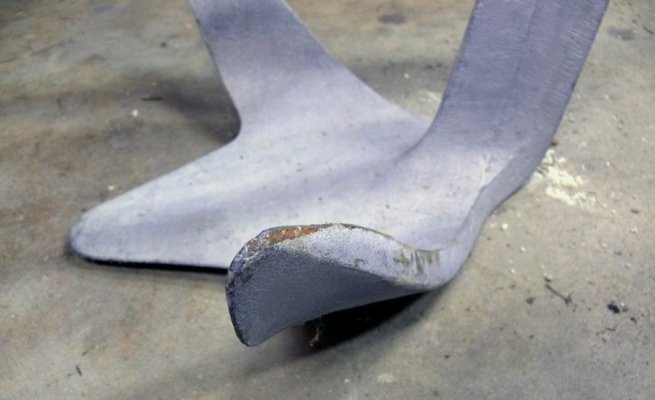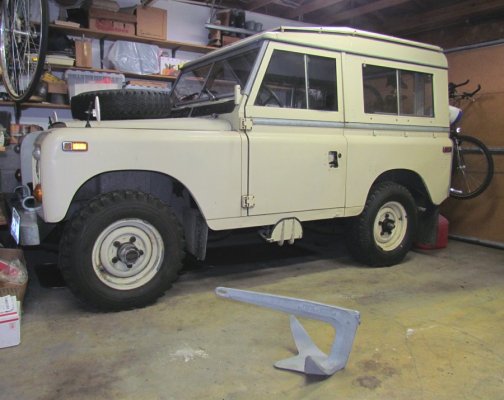Nomad Willy
Guru
One of the things I see as potentially effecting the performance of the Bruce type claw anchor is that; * It presents one of it's aggressive outboard flukes loaded w a high percentage of the anchors weight to the bottom that starts the setting process as soon as the anchor comes to rest on it's side. An outboard fluke digs in and starts the anchor rotating toward right side up. Fifty percent of the way to right side up the claw has one outboard fluke and the center fluke trying to engage the bottom at 45 degrees. The leading edge being presented to the bottom is not far from a straight line as viewed from the surface of the bottom. So what the anchor is presenting to the bottom is not a sharp and pointy thing like the tip of a Danforth but more like a bulldozer blade designed to plow and push mounds of earth on the surface. So it starts to do just that balanced on 2 flukes and much of the time it may not continue to rotate to the upright position where the center fluke can pull the anchor down deeper for full penetration or/and assuming a buried state. Any claw that can't make it through this transitional stage is doomed to plow and not set fully and be way short on holding power. This is nobody's idea or thought but mine and would require an anchor test that would be held in fairly clear water filming the anchoring event. And more than one type of bottom may be required to confirm or dispel the concept. Do any of you think this is possible?







